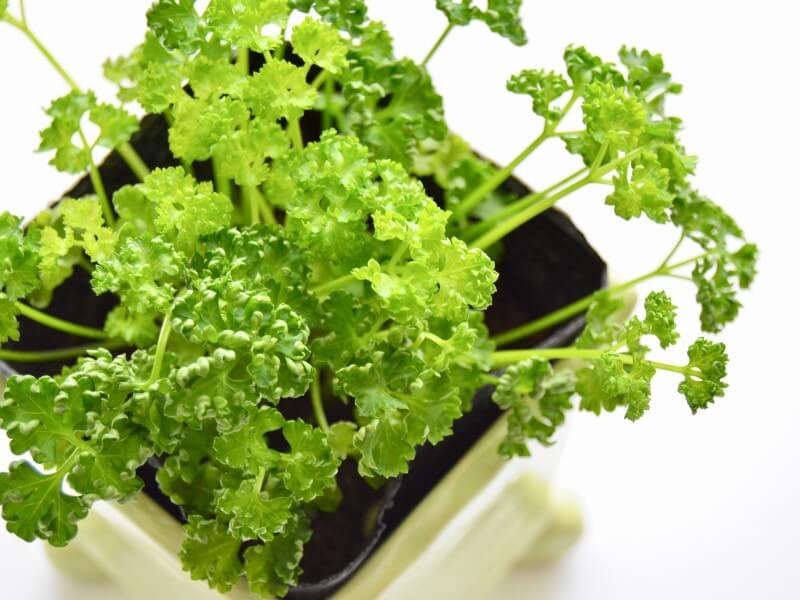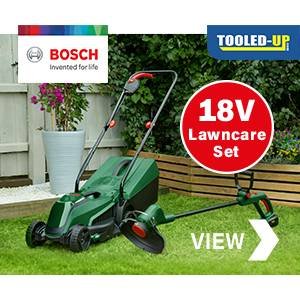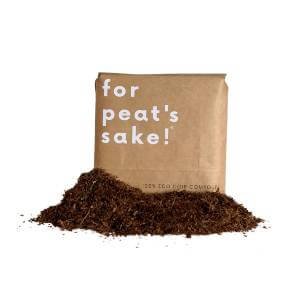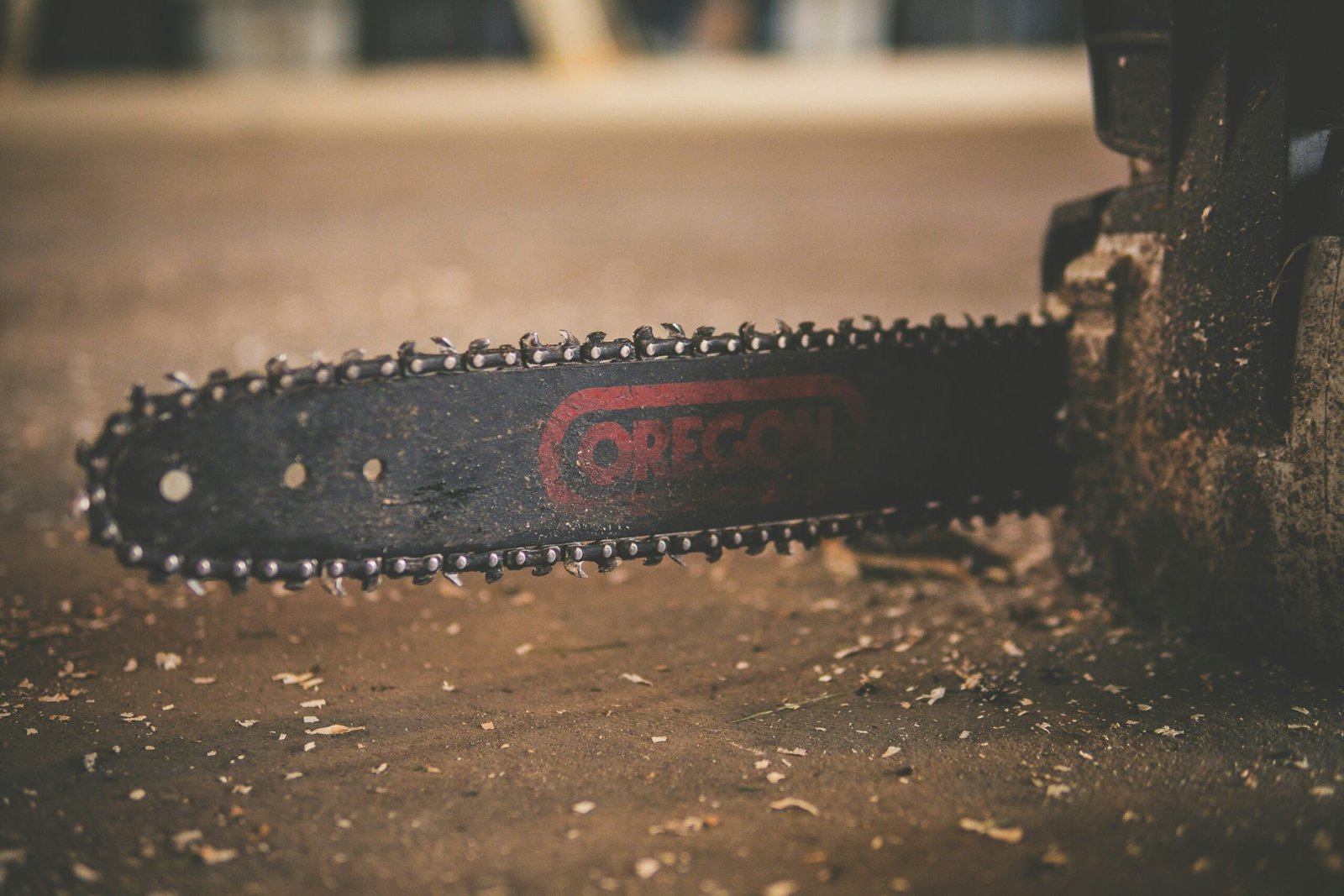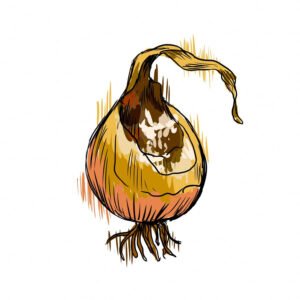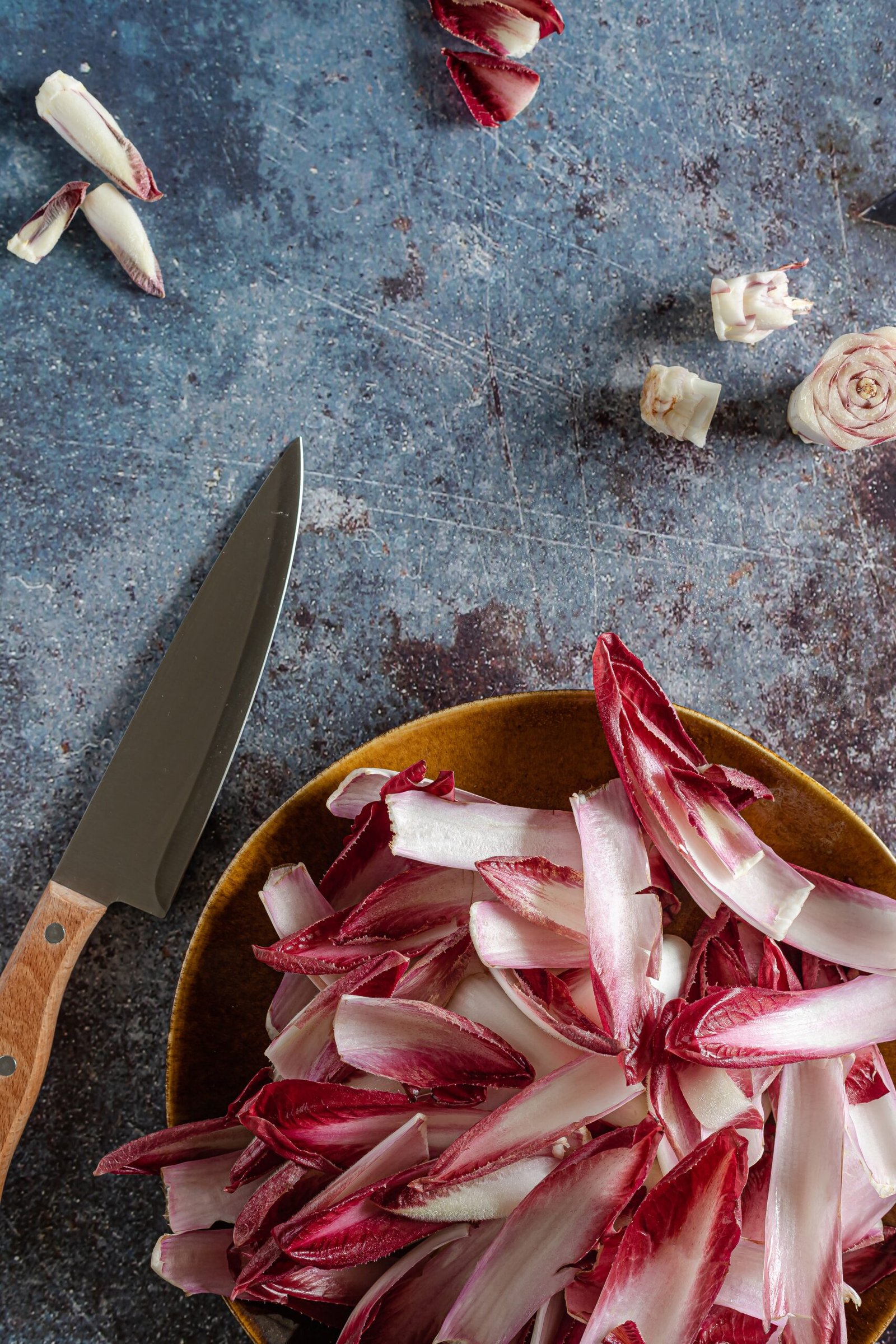Although having a pot with good drainage is essential, the pot’s material is not. Parsley looks excellent when its leaves are free to hang around the edges of the pot; they are a great companion in a mixed container with mint, Oregano, basil, thyme and chives due to their similar needs.
Growing Parsley – Location & Light
Parsley will appreciate a lot of sunlight. A south window where it will receive lots of light, roughly around 6-8 hours, is the perfect amount—turning the pot approximately every 3-4 days to ensure equal growth.
Suppose your south-facing window is not in the kitchen. In that case, it’s a good idea to mist your parsley now and then, a good option is to fill the saucer (tray) full of pebbles and add water to the tray leaving the top exposed, and the water will then evaporate, increasing the humidity.
If you are using grow lights (which would be ideal to use during the winter months), these should roughly be on for 12-16 hours a day.
Growing Parsley – Watering
Your parsley will appreciate you keeping on top of its watering, ensuring that you don’t overwater and leave waterlogged. You will also not want to let your parsley soil get too dry, which causes the plant to wither and then die.
We would suggest feeling the top of the soil, and if the first 2 inches are dry, then it is best to water. It’s recommended that watering from the bottom is the best way to water inside parsley.
Growing Parsley – Food / Feeding
You will find that your parsley will love fish emulsion or liquid kelp; we suggest feeding bi-monthly and ensuring to dilute as not to ruin the flavour. During the growing months, we would only suggest feeding once or twice a month.
Growing Parsley – Temperature
Ideally, you want the temperature to be roughly 27 degrees during the day and 20 degrees at night; however, it can tolerate slightly lower temperatures.
Growing Parsley – Soil
Parsley will need a rich soil that again has good drainage; they will appreciate a soil with organic matter. The pH is best to be more alkaline.
Growing Parsley – Harvesting
Once your parsley reaches 6 inches, this is the perfect time to start harvesting; the outside leaves are typically the ones that have grown first, so start with these; again, harvesting in the morning a great option!
When picking, you will want to ensure that you pick the stems at their base. If you just cut from the top, the plant will be less productive. Although not as fresh and when using straight from the plant, you can freeze parsley is one of the best ways to harvest parsley by following the steps above, by washing and chopping and then placing it in an airtight bag.
Drying your parsley out is also another good idea; for this, again wash and chop and place in an airtight bag/container and place in a warm, airy but dark location for roughly two days (checking on this before), remove the leaves from the stem and use it when needed. Both frozen and dried parsley should be used within the year.
Parsley is high in vitamin C and A, as well as Iron – so it’s a great herb to use in your cooking!
Let's go Shopping...
Products Coming Soon!


